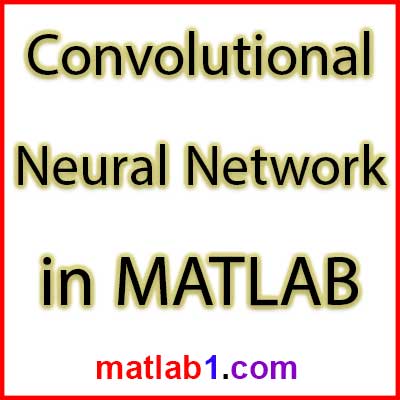Description
The convolutional neural network hereinafter referred to as CNN, refers to a type of artificial neural network that has the main features of a neurocognitive network. CNN’s structure uses three main techniques: weight sharing, local receptor fields, and spatial downsampling. This network is somewhat similar to the biological vision system model in which raw data is applied to it as network input without the need for initial processing or feature extraction. In fact, on CNN, feature extraction and identification are performed in a common structure.

In the structure of this network, in order to apply mapping to the image, it is considered that each neural connection applies the same local conversion to all spatial transformations. With this provision, the ratio between the degree of freedom of the system and the number of samples required for learning is significantly increased and causes the power of generalization of the system to be strengthened. This feature shows its efficiency in the field of image processing, in which we usually encounter the problem that the large size of the input leads to an ill posed problem.

In the structure of this network, network weights are repeated on spatial arrays, which makes this type of network inherently insensitive to input transfer. This feature is also useful for image processing. In addition, the implementation of this network on the hardware is easy to do, which makes it possible to use it in uninterrupted applications. CNN is currently used in matters such as handwriting processing and face recognition.
Heading:
Differences between conventional pattern recognition models and deep learning
What is a Trainable feature extractor?
The overall structure of a pattern recognition system
The structure of an object detection system
Features visualization in the stages of a deep learning system (convolutional network)
Low-Level feature, Mid-Level feature, high-level feature
Visual Cortex (Where did the idea of deep learning come from?)
Introduction of three deep learning structures (feed-forward, feed-back, bi-directional)
Why do we need deep learning?
Which models are deep? Are MLP and SVM and dual-layer and decision tree models deep?
In which applications are deep learning used today?
Compare models
(boosting, perceptron, SVM, AE, decision tree, RBM, DBN, DBM, GMM, spare coding, BayesNP, Conventional Net, RNN, Neural Net)
The overall architecture of a convolutional neural network
Introduction of Normalization Block
Introducing Filter Bank block
Introducing Non-Linear Block
Introducing Pooling or subsampling block
Introducing changes to an image as it passes through different layers of a convolutional neural network
Introducing the structure of a convolutional neural network
What changes the image after convolution?
What changes the image after pooling?
The concept of convolution in the image
Window in convolution
The concept of pooling in the image
An example of a local average operator
Show the image of each stage of a convolutional neural network
Error pre-propagation algorithm in convolutional neural network
A numerical example of a convolutional operator
Two uses of identifying traffic signs and identifying house numbers
An example of a convolutional neural network identifying the subject of a scene in a video
An example of a convolutional neural network in object detection


Reviews
There are no reviews yet.